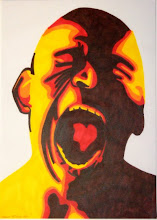
My interest lies in how some films assume the air of unfettered documentation, when at their essence, the reality of their documentation is lost in the act of the cut. The process of selection that is inherent in film editing, whether intentional or not, reverts the control of the documented image away from the camera and into the hands of the editor. Once two frames are juxtaposed in any way, even if the two shots are congruous takes of the same objects (for instance, in Olympia, not one, but a series of shots pan around the Acropolis, seemingly observing the same structure) the filmmaker has branded the piece with what he or she wants the viewer to see.

Furthermore, the simple act of selecting what to shoot is a form of edit in itself. The filmmaker has intentionally decided to capture an image that he or she finds important to photograph, and thus has edited the present reality into a honed, hunted image taken from the greater physical state. of course, this is about as distant as the filmmaker can be from the product of shooting, and so out of the "documentary" films I viewed this week, my favorite selection had to be Coney Island At Night, simply because it only attempted this one take capture of a prismatic reality, with no presumptions made or artifice intended at all.


















